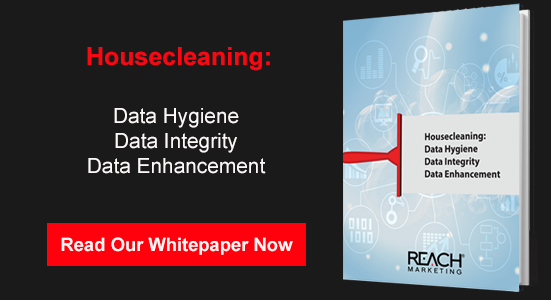If you could assemble buyers in a factory, your sales team’s life would be simple. One solution would fit every customer. No one would have to worry about lead nurture programs or sales/marketing integration because everyone coming to you would have identical needs.
In the real world, B2B buyers are complex – but there’s a way to simplify how you approach them. Customers may be individuals, but they share some common traits that let you group them together into market segments. With MARKETING AI®, you can take that a step further and create dynamic segments using buyer personas based on big data.
Understanding Customer Personas
Personalization is key to delivering a great user experience, but how do you fit yourself to each buyer’s needs? Customer personas are representative stand-ins for individual buyers that let you address market segments with messages that feel personally relevant to each prospect within them.
To decide on the best ways to divide your market into segments, you need meaningful data and a way to make that information instantly accessible. That’s where buyer personas come in; they act as detailed labels you attach to each market segment so you can recognize the defining characteristics of the leads who belong to that segment at a glance.
Quality and Quantity
Your marketing automation system’s analytics offer qualitative and quantitative data, and both are essential ingredients in a well-made buyer persona. Quantitative data is a “just the facts, Ma’am” look at your prospects’ vital statistics, including geographical location, company size, website traffic analytics, and other demographic details. This data is the foundation on which qualitative data rests, so it’s important to use data enhancement to keep your records complete and up to date.
Qualitative data includes all the softer details and educated guesses about your buyers, and it’s where marketing automation truly shines. By using collected information from gated content, subscriptions, surveys, and data augmentation, your MARKETING AI learns about leads’ habits and interests. The quantitative analytics you’ve collected then support and refine your qualitative insights.
What Defines Your Buyers?
It isn’t enough just to have masses of data about your buyers. If you knew they all had brown eyes, it might be a fascinating coincidence, but it wouldn’t be relevant to their buying decisions. Annual company income, on the other hand, may be highly relevant. Here’s where the detailed real-time analytics marketing automation supplies can truly shine. You and your marketing automation consultant can graph data and see important trends that speak volumes about your customers’ motivations. You might see clusters of price-conscious and service-conscious buyers that easily sort into segments, for example; with your MARKETING AI, you can dig deeper into each group and find out what else they share and then use that information to create buyer personas to represent each group.
How Many Buyer Personas Do You Need?
The point of customer personas is to make it easier to approach and connect with individual buyers by grouping them together in categories that make sense. Too many personas would add needless complexity; too few wouldn’t let you personalize your marketing campaigns finely enough. Generally, four to six personas work well for most businesses, but some B2B companies with complete ownership of their market thrive with only two or three. Others with highly diverse markets do well with more.
You can’t build buyers to suit your needs, but with thoughtfully designed buyer personas backed up with hard data, you can build a marketing program that serves your buyers’ needs.
© Reach Marketing LLC 2017 All Rights Reserved.







